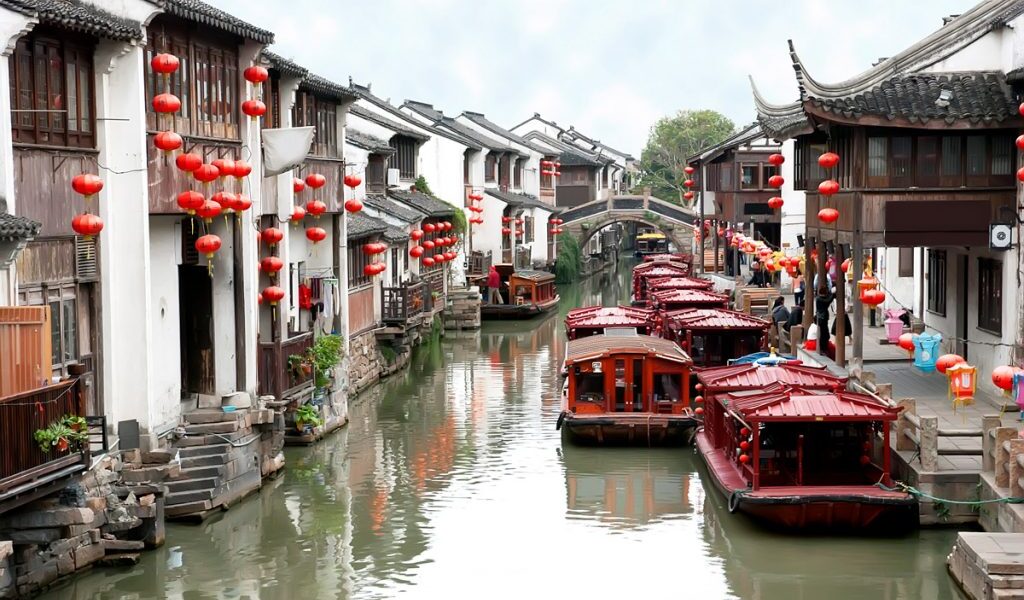Water has long been a source of life, commerce, and beauty for human civilizations. Some cities, built on the edge of rivers, lakes, or even directly on water, have become iconic destinations thanks to their stunning landscapes, unique cultures, and fascinating histories. These cities thrive on water, showcasing the ingenuity of their residents and offering travelers an unforgettable experience. Here are some cities built on water that you should visit:
Venice [Italy]

The crown jewel of water cities, Venice is a masterpiece of romance and resilience. Built on more than 100 small islands in a lagoon of the Adriatic Sea, Venice has no roads — just canals, bridges, and boats. Its labyrinth of waterways connects Renaissance architecture, palazzos, piazzas, and churches. Whether you’re cruising in a gondola or wandering the narrow streets, every corner of Venice feels like a living painting.
Must-do: Glide down the Grand Canal at sunset, visit the colorful islands of Murano and Burano, and get lost in the back alleys away from the crowds.
Amsterdam [Netherlands]

With its 17th-century canal belt, Amsterdam is often called the Venice of the North. But this Dutch capital has a vibe all its own. Tree-lined waterways, charming brick houses, and over 1,600 bridges create a cozy yet cosmopolitan feel. The canals here are not just scenic — they’re woven into daily life, blending effortlessly with biking culture, art, and nightlife.
Must-do: Take a candlelight canal cruise, explore the Anne Frank House, and chill in the artsy Jordaan neighborhood.
Bangkok [Thailand]

Bangkok may be a modern megacity, but its roots lie in the river. While sometimes called one of the Venice of the East cities, the Thai capital has long been characterized by a blend of land and water settlements. Today, the Chao Phraya River and its canals (khlongs) still pulse with local life — from floating markets and riverside temples to long-tail boats ferrying locals and visitors alike.
Must-do: Cruise the river at night past illuminated temples, shop by boat at a floating market, and visit Wat Arun for riverfront views.
Bruges [Belgium]

Step into a storybook in Bruges, where cobblestone lanes and medieval buildings meet calm, mirror-like canals. Often called one of the most romantic cities in Europe, Bruges is known for its chocolate, lace, and dreamy water reflections. Compact and walkable, it’s the perfect city to explore slowly — preferably with a Belgian waffle in hand.
Must-do: Take a canal boat tour, climb the Belfry for panoramic views, and sip hot cocoa by the water.
Suzhou [China]

Suzhou is famed for its network of canals, classical Chinese gardens, and elegant stone bridges. Located just west of Shanghai, this ancient city offers a peaceful escape steeped in history, art, and traditional architecture. The waterways are still in use today, winding through neighborhoods that feel untouched by time. Suzhou is another city that proudly carries the Venice of the East title.
Must-do: Cruise the canals by wooden boat, wander through the Humble Administrator’s Garden, and shop for authentic silk.
Hamburg [Germany]

A city that thrives on water, Hamburg boasts over 2,500 bridges, more than either Venice or Amsterdam individually. Its vast harbor, lakefront views, and revitalized warehouse district make it one of Europe’s most underrated urban gems. The Elbe River and its canals shape the city’s culture, economy, and scenery — from maritime museums to floating restaurants.
Must-do: Explore the historic Speicherstadt, catch a show at the Elbphilharmonie, and take a sunset boat tour through the harbor.
Saint Petersburg [Russia]

Built by Peter the Great as a window to Europe, Saint Petersburg is a city of canals, rivers, and imperial splendor. Spread across approximately 42 islands connected by around 350 bridges, it features grand palaces, gilded domes, and a historic heart crossed by the Neva River. Its baroque and neoclassical buildings reflect in the waterways, especially magical during the White Nights of summer.
Must-do: Cruise the canals at twilight, tour the Hermitage Museum, and visit the opulent Peterhof Palace.
[Contributed By Anushka Gaikwad]











